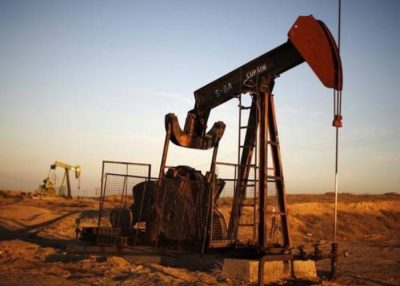Why the world can’t say goodbye to oil

This is not charcoal. This is oil, a single resource with the power to generate hundreds more. From fertilisers that feed crops to plastics in phones and packaging, oil has embedded itself in modern life more deeply than any firelit block of charcoal ever could.
Now, with talk of moving beyond oil, environmental experts urge caution: don’t bid a hurried farewell, focus instead on managing risks while keeping essentials flowing.
Globally, about 84 percent of crude oil is burned as gasoline, diesel, jet fuel, heating oil, or LPG; only 16 percent feeds chemicals and manufacturing producing fertilisers, pesticides, pharmaceuticals, plastics, solvents, and synthetic fibres, according to the International Energy Agency.
In the United States, around 66.6 percent of petroleum is consumed by transport, 27.5 percent by industry, and the rest by residential, commercial, and power users.
Petrochemicals are the quiet giant. They already account for roughly 15.4 percent of global oil demand and are projected to reach 19.1 percent by 2035, the IEA says in its Future of Petrochemicals outlook. They supply the feedstock for plastics, foams, medical goods, and packaging materials central to both developed and emerging economies.
Agriculture is a less visible but critical user. In 2022, it consumed about 118 million tonnes of oil equivalent (Mtoe) worldwide, up from 110 Mtoe in 1990. That energy runs tractors, pumps irrigation, moves goods, and powers fertiliser plants. In developed economies, food systems can account for nearly a fifth of fossil-fuel use.
Nigeria’s case is even more layered. Over the past 21 quarters, oil has accounted for less than 10 percent of GDP, according to Statista, it still generates more than 80 percent of export earnings and roughly 50 percent – 60 percent of government revenue in most years.

More importantly, oil is the backbone of the country’s foreign-exchange supply. Every barrel sold abroad brings in hard currency, mainly dollars needed to settle imports, service debt, and shore up the naira.
When oil prices rise, Nigeria’s FX coffers swell, supporting naira stability. When they fall as in 2014–16 and 2020 the naira comes under pressure, reserves thin, and inflation spikes.
Even non-oil sectors like manufacturing and services feel the impact, as many rely on imported machinery, raw materials, or fuel refined abroad. For now, there is no other export with the scale and liquidity to replace oil in earning FX.
This dependency makes any talk of “goodbye oil” in Nigeria not only premature but risky. The country’s manufacturing base is still limited; agricultural exports, while growing, are far from matching oil’s dollar inflow.
Renewable energy projects are emerging but cannot yet generate tradeable foreign currency at scale.
Globally, the debate mirrors Nigeria’s bind. The International Energy Agency expects oil demand growth to slow to 720,000 barrels per day in 2025, down from 990,000 at the start of the year, with supply outpacing demand thanks to OPEC+ output particularly from Saudi Arabia, according to its July 2024 Oil Market Report.
BP, in its Energy Outlook, forecasts demand may peak as early as this year, while OPEC maintains in its World Oil Outlook that growth will continue for decades.
Yet short-term market sentiment remains volatile. Geopolitical tensions, including the renewed flare-up between Iran and Israel, have injected a risk premium into crude prices, with traders wary of potential supply disruptions in the Strait of Hormuz, a chokepoint for roughly a fifth of global oil flows.
While neither side has directly targeted energy infrastructure, the standoff underscores how swiftly political shocks can reshape the demand–supply balance, even in a market trending toward slower growth.
Yet the hard truth is that some oil uses are hard to replace. Aviation, long-haul shipping, petrochemicals, and large-scale agriculture still lean on oil’s unmatched energy density and chemical versatility. Even wind turbines and electric vehicles rely on petroleum-based components.
If history is a guide, transitions are slow. Charcoal took decades to fade, and coal never disappeared entirely. Oil will likely follow the same path, less dominant but still present.
The key difference this time is political and environmental pressure, combined with viable alternatives in some sectors.
Environmental experts are clear: oil’s phase-down is essential to cut emissions, but outright abandonment is unrealistic in the near term especially for economies like Nigeria’s, where oil is a lifeline for FX and currency stability. What’s needed is a measured approach:
- Diversify the economy to reduce FX vulnerability.
- Invest in cleaner extraction and refining.
- Expand renewables for domestic use to free more oil for export.
- Channel oil revenues into long-term assets both physical and human that can outlast the resource.
The world doesn’t need to say goodbye to oil just yet. It needs to manage it better, reducing harm, retaining critical uses, and investing in alternatives that can stand on their own.
For Nigeria, the stakes are higher: oil is not just fuel; it is the currency anchor, the budget’s backbone, and the bridge if used wisely to a more resilient economy.
In the end, the transition will not be a clean break. It will be a long negotiation between necessity and sustainability, shaped by market forces, technology, and political will. Oil will not vanish tomorrow.
But with the right choices, its role can shift from dominating economies to supporting them quietly, efficiently, and without the environmental costs that have shadowed its long reign. (BusinessDay)

